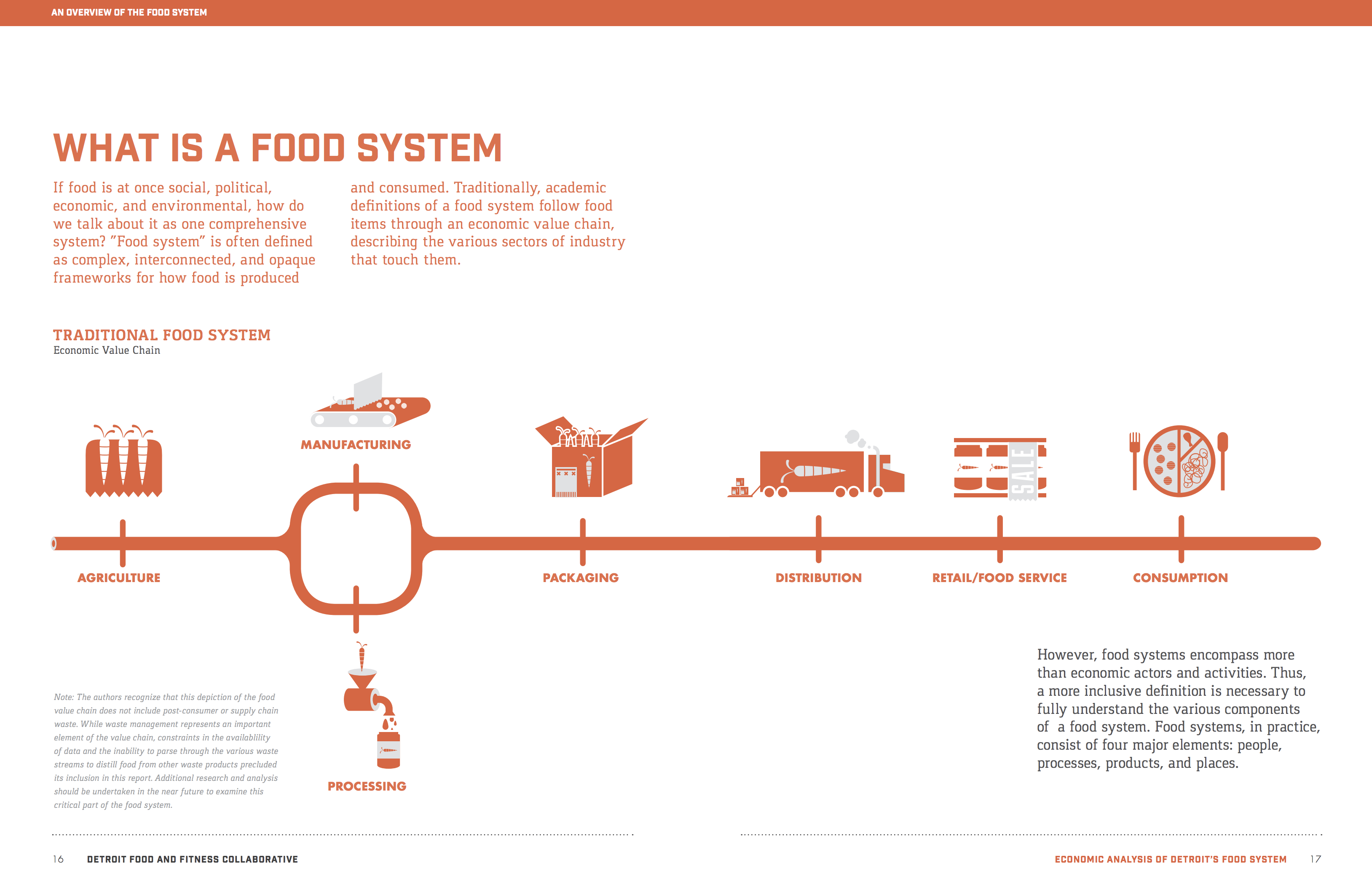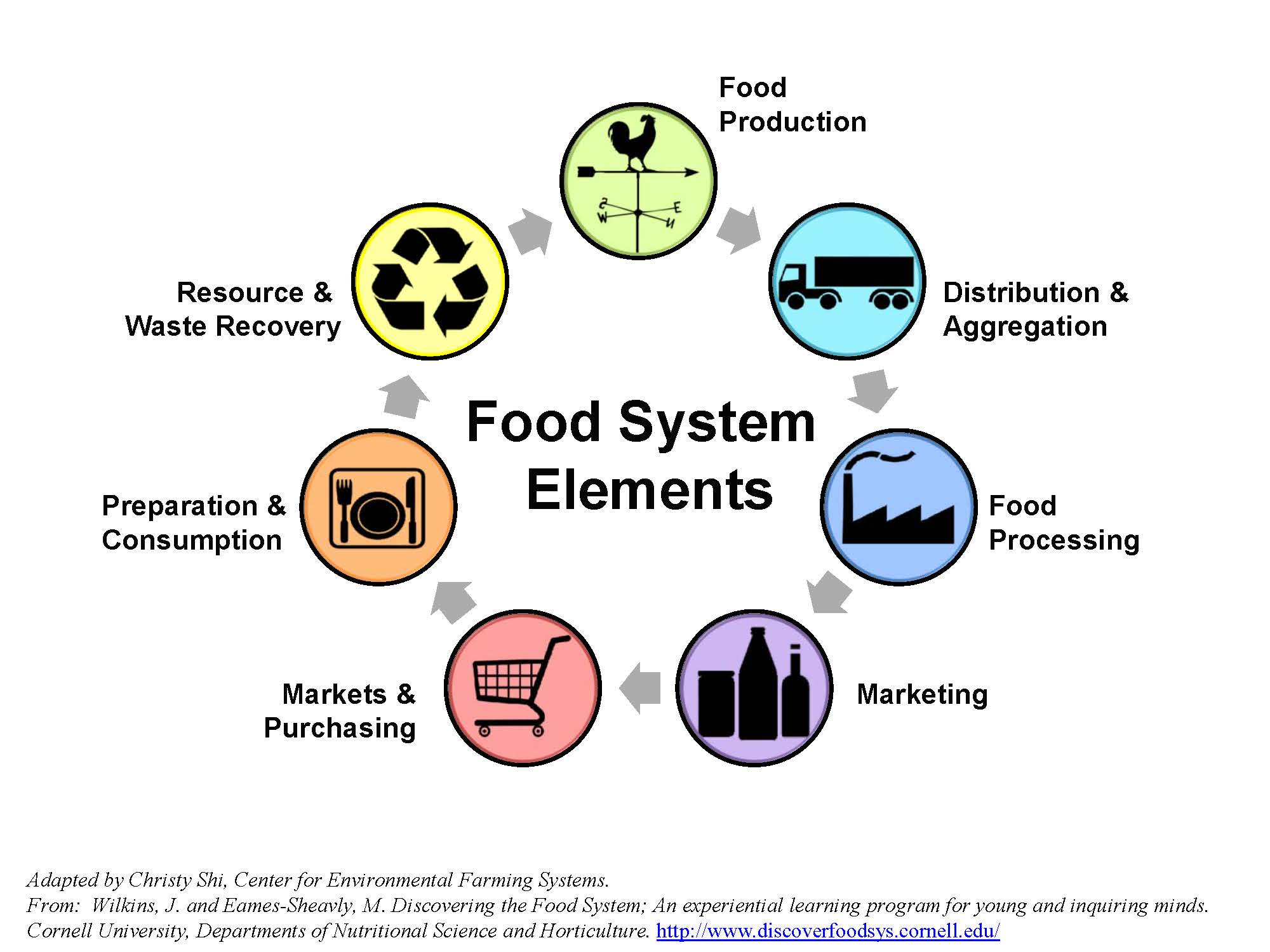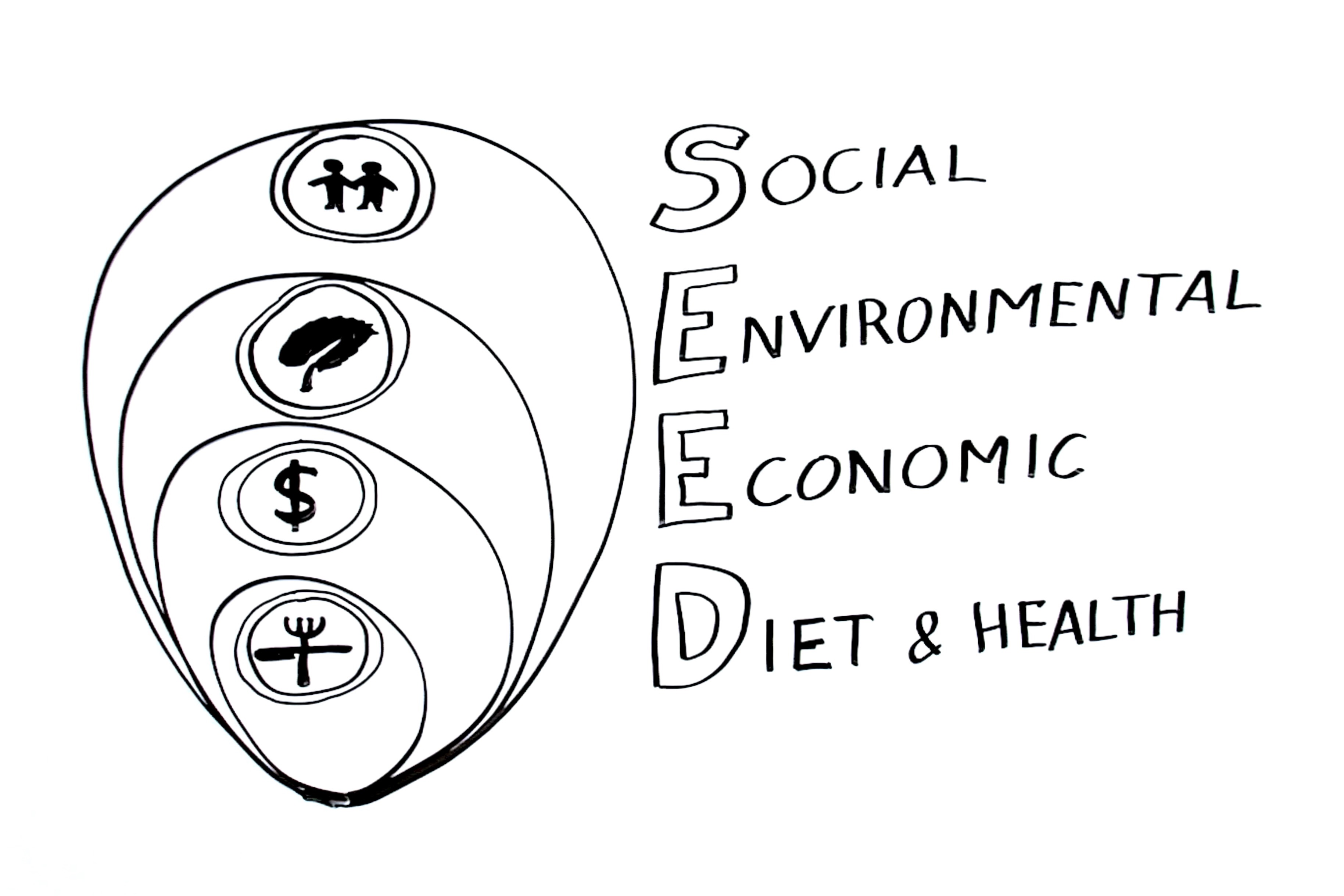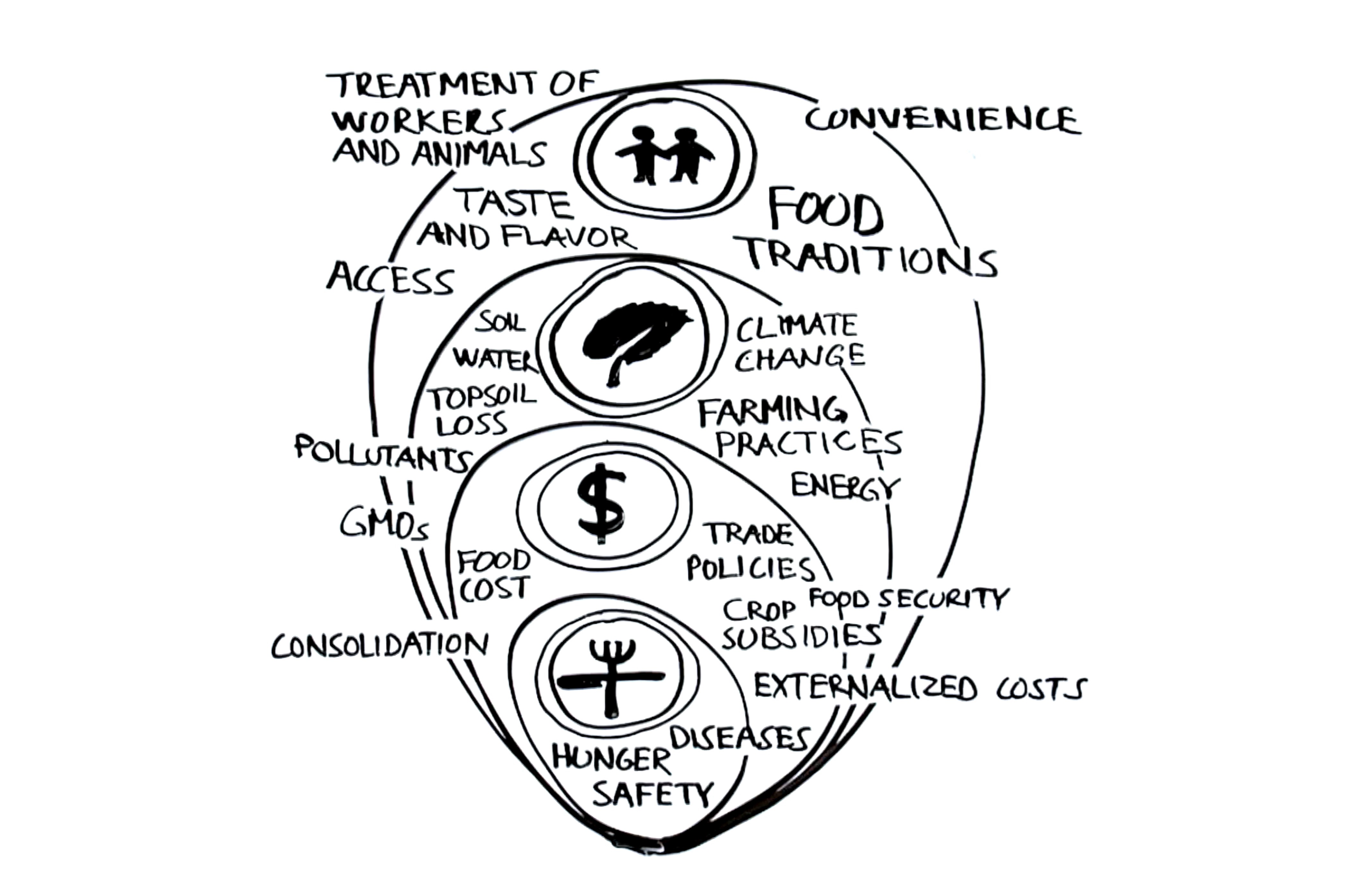Modeling an Equitable Michigan Food System
A session at the Good Food Summit, “Designing for Equity: Modeling an Equitable Food System” will explore conceptual models that address aspects of the food system such as social impacts, environmental issues, economic factors and diet and health issues.

Throughout the past 10 years, the Good Food movement in Michigan has largely focused on cultivating local purchasing, sustainability and economic development. As efforts to improve the food system in Michigan progress, we must also consider how we equip leaders in this movement to address justice, equity and inclusion.
What would a model of a more equitable food system include? Most widely-accepted conceptual models of the food system help us understand the steps from farm to plate or waste stream. For example, common models tend to follow the food value chain and place a heavy emphasis on the economic drivers of the food system.
While these models are helpful to illuminate some elements and processes, they often leave out key components of the food system such as labor, relationships, culture, health outcomes, environmental impacts, education and career opportunities. Too often, we may be working from incomplete pictures while we set policy agendas and plan strategies that support Good Food.
In order to cultivate a truly sustainable food system, we cannot ignore the inequity woven throughout the current system. If we design a model of the food system that shines a light on the gaps, it may help us consider different strategies to achieve our Good Food goals.
At the Michigan Good Food Summit in October, a breakout session led by Kibibi Blount-Dorn of the Detroit Food Policy Council and Lindsey Scalera of the Ecology Center will engage participants in designing a more equitable food system model. This session will explore models that disrupt the status quo and seek to address some of the more “hidden” aspects of the food system.
One of Lindsey’s favorite examples of a different model is from a video by the University of Vermont, titled “What’s on Your Plate.” The “SEED model” of the food system doesn’t take a linear or cyclical path, but rather considers the social, environmental, economic, diet and health impacts of the food system.
Co-facilitator, Kibibi Blunt-Dourn offers, “we hope to embody the theme of the Good Food Summit, ‘Amplifying Voices for Equity,’ by engaging in a design activity with participants. This session is open to anyone interested in working towards a more equitable food system in Michigan. The more diverse perspectives we have in the room, the stronger our design will be.”
To read a full description of this workshop, view a list of all the breakout sessions, and register, visit the Good Food Summit event page at http://www.michiganfood.org/summit
Follow the 2018 Good Food Summit on Facebook using the hashtag #2018goodfood.



 Print
Print Email
Email


